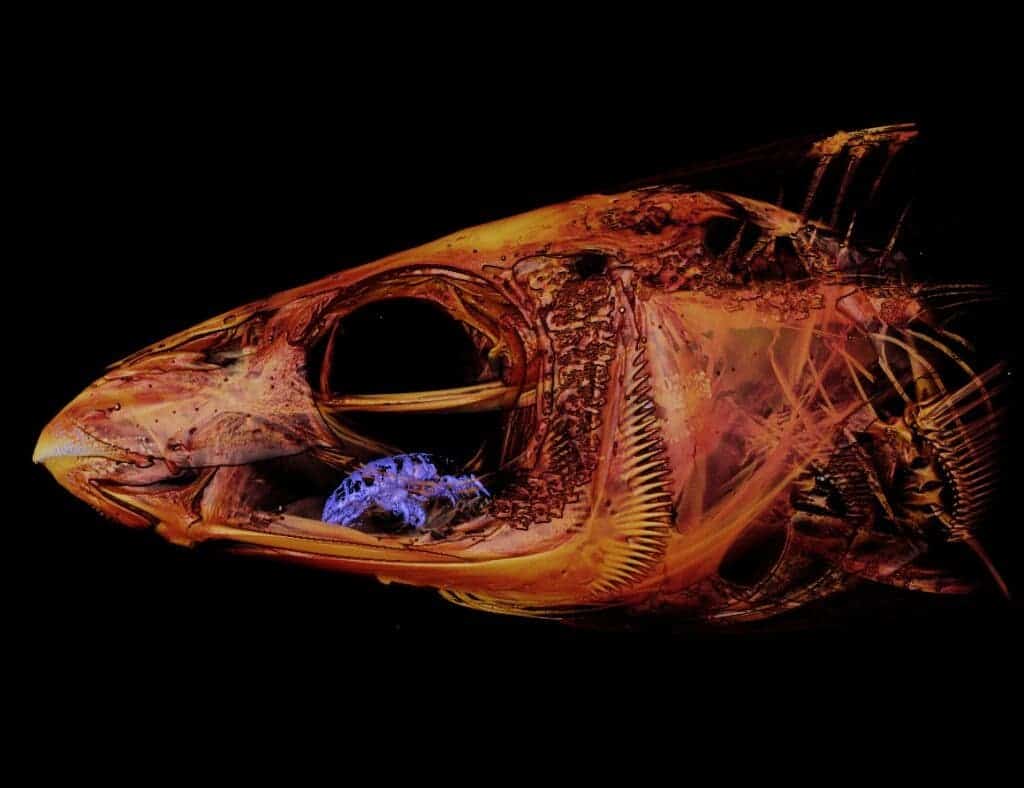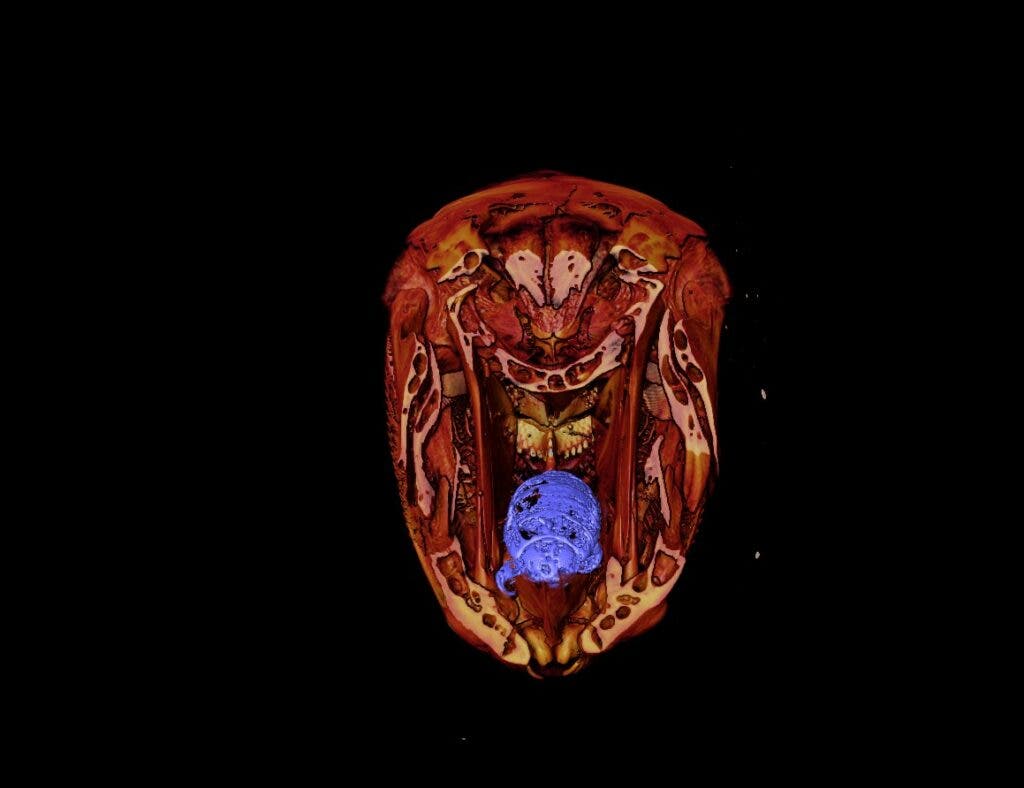Rice University biologist Kory Evans started his Monday like any other day, expecting it to be largely uneventful. He was wrong.
His day was about to change when he started scanning the head of a fish, which is not uncommon in his work. But what was uncommon what was inside the fish’s head. A crustacean had eaten and replaced the tongue of the fish.

Brutal
The crustacean in case is an isopod, also known as tongue biter or tongue-eating louse, and it sucked the blood from the tongue of the fish, releasing an anticoagulant maintain the flow of blood even as there’s almost nothing left of the tongue. But that’s just the opening act — it gets much worse.
Then, the isopod takes the role of the tongue in the mouth of the fish.
The discovery was done by Evans, who works at the Department of BioSciences at Rice University in Houston, Texas, when digitizing the X-rays of the fish skeletons. He posted the images of the finding on Twitter, joking about the whole situation. “Mondays aren’t usually this eventful,” Evans joked in the tweet.
There are around 10,000 known species of isopods and a surprisingly large number of them have adapted to eat tongues: about 380 go after the tongues of specific fish. It’s not entirely surprising since isopods are one of the most morphologically diverse of all the crustacean groups, coming in many different shapes and sizes and ranging from micrometers to a half meter in length. About half of the known species of isopods live in the ocean.
Masquerading as a tongue
The specific type that Evans encountered enters the body of the fish through the gills, attaches to the tongue and starts to feed.It grabs the tongue with its seven pairs of legs and takes out the blood until the organ drops off.
Mondays aren’t usually this eventful. I found a tongue-eating isopod (purple) in one of our wrasse scans this morning while digitizing it. These parasites attach themselves to the tongues of fishes and effectively become the new tongue…horrifying #backdatwrasseup pic.twitter.com/axlraUrh8W
— Kory Evans PhD (@Sternarchella) August 10, 2020
But that’s just the start. Having already taken out the blood from the tongue, the parasite acts as a functional tongue for the fish, taking its place and feeding on its mucus. The link between the two can go on for years, with cases reported of fishes outliving their parasites, according to researcher Stefanie Kaiser. Not much is known about how these isopods reproduce, but the most common theory is something to behold. Researchers believe that juveniles that first attach to the gills of a fish become males. As they mature, they become females, likely mating on the gills of fish.
Speaking with Live Science, Evans said he made the discovery as part of his current research, which involves scanning a family of coral reef fishes called wrasses.
He aims at creating a 3D X-ray database of skeletal morphology of the fish group and then share it with researchers from around the world.

“I compare skull shapes of all these different fish to each other, that requires placing landmarks — digital markers — on different parts of the body,” Evans explained. He looked into the mouth cavity of one specific wrasse, a herring cale (Odax cyanomelas) from New Zealand, and found something strange.
“It looked like it had some kind of insect in its mouth. Then I thought, wait a minute; this fish is an herbivore, it eats seaweed. So I pulled up the original scan, and lo and behold, it was a tongue-eating louse,” he said, explaining that wrasses are actually a very strange fish with a second set of jaws on their throat.
It’s like being in the movie Alien, Evans said. Some wrasses known as parrotfish even have mouths so strong that they can bite through the coral. The slingjaw wrasse, for example, can launch its jaws forward up to 65% the length of its head in order to catch evasive pray.









